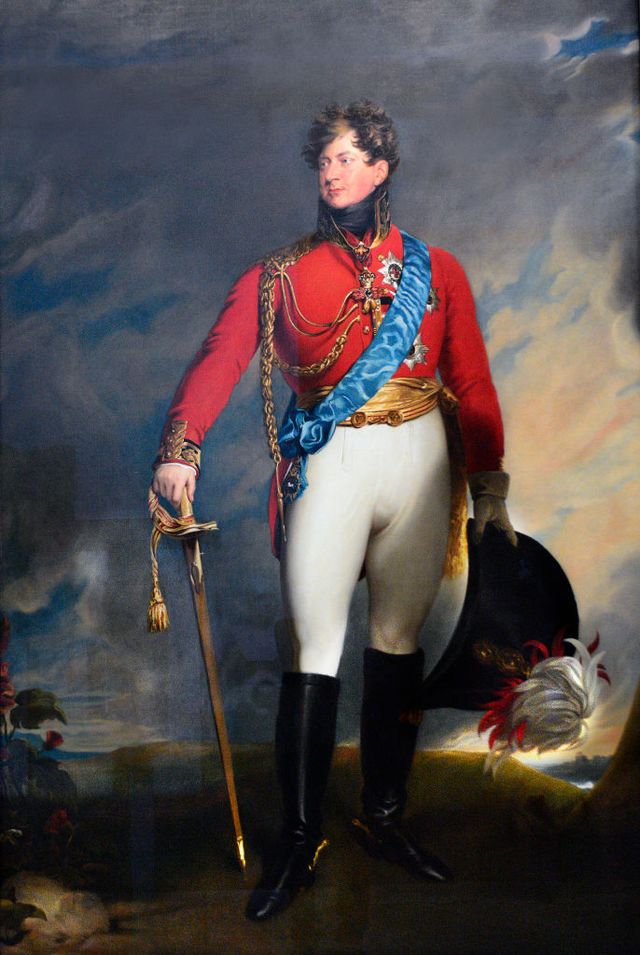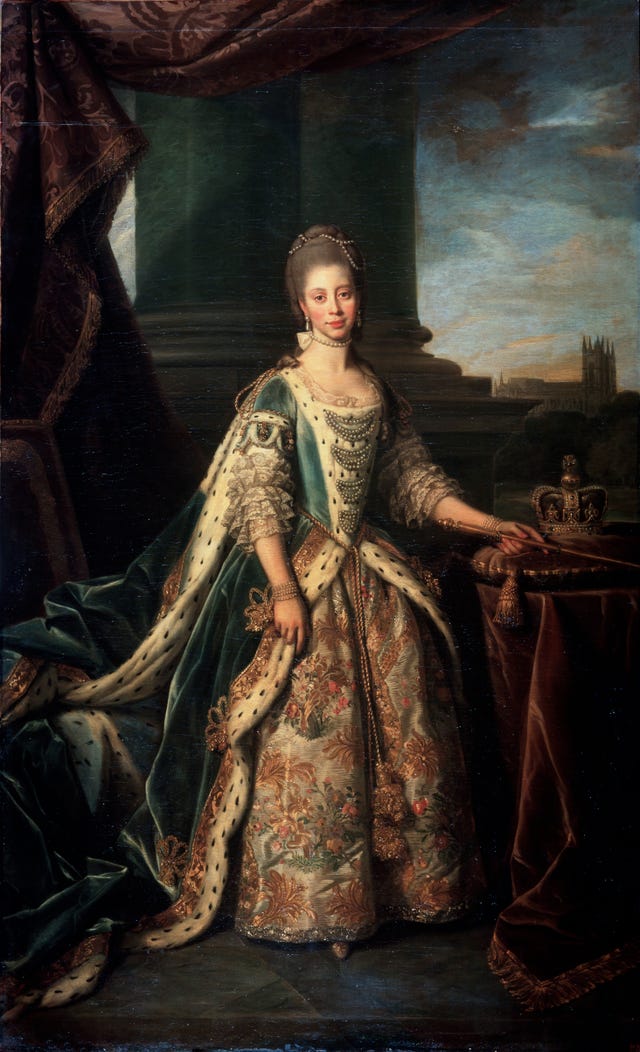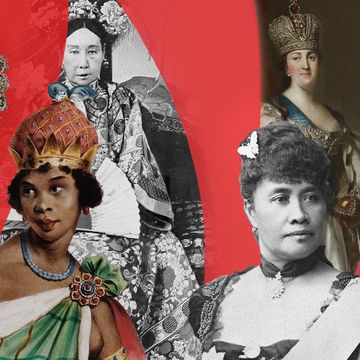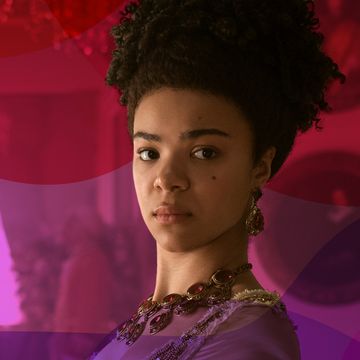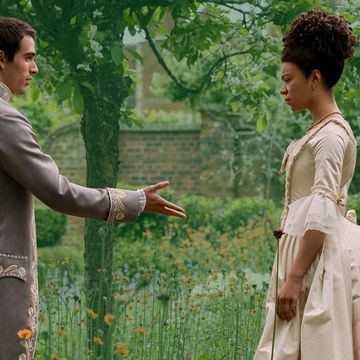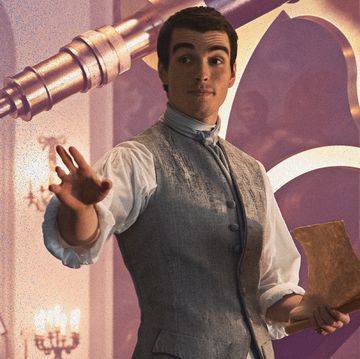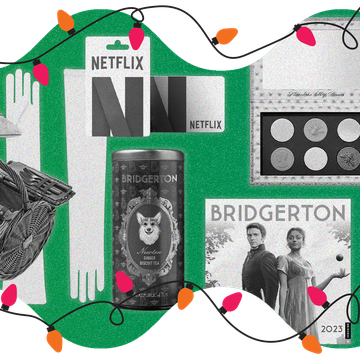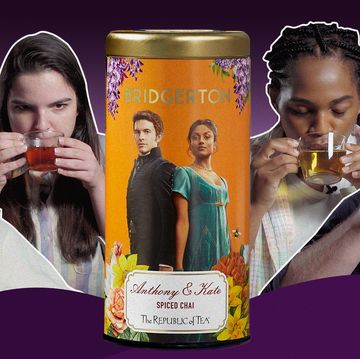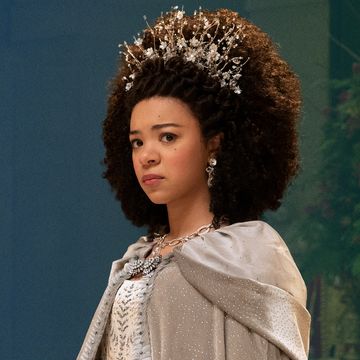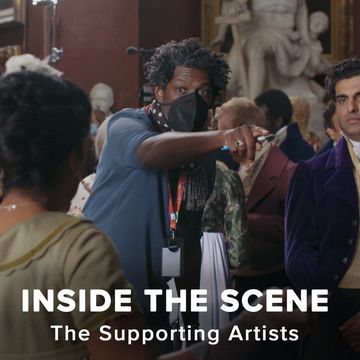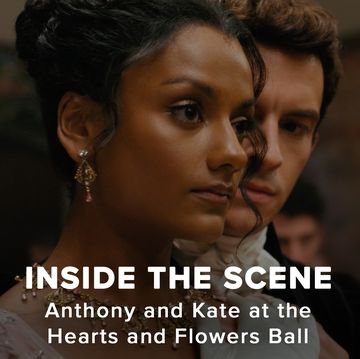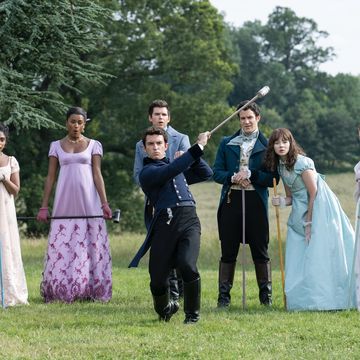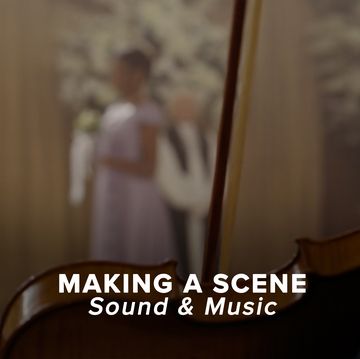“We think we’re familiar with an idea of regency society from period dramas,” says Bridgerton’s historical expert, Hannah Grieg, of the high-society setting of the upcoming Shondaland drama that follows the Bridgerton family through life, love, and everything in between. “But actually, we haven’t encountered this aspect of the historical world before — one of high fashion and fast living.”
Indeed, when it comes to the backdrop of Bridgerton — a reimagining of Julia Quinn’s best-selling romance novels that premieres December 25 on Netflix — it’s a far world from what we’ve typically seen in, say, a Jane Austen adaptation.
The Bridgertons, the Featheringtons, and the rest of the aristocratic Ton — that’s “town” for the uninitiated — saw themselves as a forward-thinking, ultra-modern, fashionable, youthful, fast set of people that, back then, represented what we think of today as gossip-heavy celebrity culture. And though Bridgerton takes place in an imaginary world in the 1800s, the Regency Period in London holds a memorable place in British history.
Creator and showrunner Chris Van Dusen took a few creative liberties with Bridgerton in order to bring it to a contemporary audience, but in case you’re looking to learn a bit more about the Regency period, we’ve put together some historical context to prepare you for Bridgerton’s premiere next month.
A Rundown of Regency
This period — from 1811 to 1820 — is so named because Prince George IV, ruling in place of his sick father, King George III, acted as “Regent,” with Prince George’s mother, Queen Charlotte, serving as queen consort of the United Kingdom. Given the Napoleonic Wars had been raging since 1803, it was a time of great political, societal, and economic change for Britain. Even so, with both George IV and Charlotte’s interest and patronage in the arts, it was also a period of cultural achievement and refinement in the United Kingdom, one that allowed for the typical societal structures of London to undergo massive change.
Regency London would feel a bit like London today, where different demographics mix and meet, particularly in social spaces. In Regency London, one of the most popular spaces were pleasure gardens, a sort of fairground, a place to see and be seen within the upper-middle class. Floating just above — and sometimes descending below for a bit of hedonism and fun — was the aristocracy: the rich, titled, independent citizens who had close access to the Royal Courts of Queen Charlotte, but weren’t beholden to the Court’s rules and regulations like in Tudor times.
“It’s a very frenetic London life,” says Greig. “And, because they’re away from the eyes of the Court, that gives it its energy and excitement and lots of potential to break the rules — because you’re not always being watched by the King or Queen.”
Of course, within any society, there existed strata of peoples. Where there was opulence at the top that often trickled down to lower classes who were savvy enough to find entreés to the upper class, at the bottom existed a world of poverty, crime, womanizing and gambling. Indeed, it was a wild, violent, but energetic scene, continuously buoyed by the fact the Regent himself — who, after his father’s retirement, was mostly kept away from politics and military operations — openly indulged in his own pleasures. As such, the Regent, his court, and the aristocracy, in particular, were viewed from below as the celebrities of the day, very far out of reach but also visible enough to elicit a culture of adoration that seems all too familiar by today’s standards.
Who wore it best?
Regency fashion bore an obsession all its own among the upper class. The styles and trends of the day actually began just before the turn of the century, when the French Revolution — where the meek rose up against the elite — left English aristocracies traumatized. In adopting French style — even while at war with the country — the British attempted to make their clothes less gaudy and a bit more functional, lest the masses rise up against them, too.
Even so, Regency wasn’t without its flair. Bridgerton modernizes the Regency style with more colorful, confectionary fabric choices and embellishments, but maintains the most recognizable aspect of the Regency style, the women’s empire waist, a cinched-in waistline on dresses and skirts that sits just below the chest. When you think of Jane Austen, you think of this look, as it was the go-to silhouette for both day and evening dresses. Equally popular in Regency wear were pouffy upper sleeves — sometimes over bare arms, sometimes over elbow-length gloves — and fitted bodices, all in a neutral palette. White was especially popular in the upper class to denote purity and wealth.
The men of that time wore strictly tailored jackets, waistcoats (or vests), pants, and linen shirts with an attached collar and, generally, a cravat around the neck. Shorter pants had been replaced by longer pants, tucked into boots, that fasted with a dual button fly. In Bridgerton, the button flies were done away with in favor of a sleeker look. While you’ll see period-appropriate top hats throughout the series, there was a strict rule of no bonnets on the show as a way to reinvigorate the era. As with the women’s garments, bright colors were added along with contemporary fabrics to give the series a more feast-for-the-eyes feel.
Race relations
“This society is more diverse than most of us probably presume,” says Greig. “From a historian’s point of view, a London society should have a mixture of people from around the world of different races and backgrounds in a way that period dramas haven’t adequately represented.”
In some ways, Greig feels that Bridgerton gets us closer to what most historians would accept as a visual reality of the past. It is widely believed that Queen Charlotte (played by Golda Rosheuval) had African ancestry. As the wife of King George III, she was in the highest seat of the land for 57 years, which made Bridgerton creator and showrunner Chris Van Dusen wonder what could have come of that had implications for her race not been so taboo. As Greig notes, Bridgerton pushes the envelope of what race relations looked like in Regency London by introducing the idea of people of color in high social ranks where they wouldn’t necessarily be expected. Van Dusen used this as a jumping-off point to consider how other Black British citizens could have risen up through the ranks and bestowed property and titles, much like Bridgerton’s leading man, Simon Basset, Duke of Hastings (Regé-Jean Page).
Speaking of Simon — his closest friend and confidant, Will Mondrich (Martins Imhangbe), is another character from the Bridgerton world based on a real person: a Black boxer named Bill Richmond. Born into slavery in 1763 in Staten Island, New York, Richmond left for England when he was 14, never to return. Richmond grew to great prominence for his fighting skills throughout the Regency era, but really wowed during the Georgian period in King George IV’s court. Richmond lived a life of “freedom, glamour and social acceptance in London.”
Tabloid sensations
A cornerstone of the Bridgerton narrative is Lady Whistledown (voiced by Julie Andrews), who serves as the show’s narrator via her pseudonymous Society Papers, a weekly rundown of the Ton’s gossip that regularly riles up high society. In real-life Regency London, printed gossip abounded in the newspapers and weekly scandal sheets. Greig points to the The Morning Chronicle, a daily newspaper which ran a regular column called “fashionable intelligence” which described the comings and goings of London’s celebrity world. Though, it’s worth noting that in Bridgerton, Lady Whistledown prints full names, whereas in original Regency scandal sheets there was some attempt to disguise the targets by just listing their initials.
Gossip consumption was already rabid, but with the invention of the steam press in 1811 and its eventual adoption by London’s top newspapers by 1814, dissemination of information occurred 10 times faster and much more cheaply, making these types of publications more prolific and easily accessible. The fact that the rich were so very rich and the poor so very poor made it seem like pure fiction to those in the lower classes who read about the aristocracy. Indeed, there was no “stars — they’re just like us!” section in those days.
Off to the ball
As a social routine, it was not uncommon to attend two balls per week during “the season” — a six-month period between about November and July when the aristocrats would descend upon London from their country estates in order to secure their status by working their contacts, forming allegiances, buying and selling property. And all of this has a single purpose in the world of Bridgerton: to secure marriages for debutantes which would, in effect, unite powerful families. Greig tells of one duchess who clocked up 68 balls in a season, in addition to attending the opera every Tuesday and Saturday nights and the theatre at least once a week. But it truly was the balls where the action happened. These glitzy gatherings determined who was “in”' and who was “out,” as one had to be invited by a leading fashionable hostess — or fashionable mamas as Bridgerton would call them — in order to attend. Balls certainly had lots of functions across business and politics, but their most important roles was in the marriage mart.
“High society expected marriages to be made within its own ranks,” says Greig, explaining the mart, “and private balls organized by society hostesses controlled the pool of suitors. Guest lists were very exclusive, ensuring a woman like our Daphne would only meet the most eligible of bachelors. The Ton led not only the worlds of celebrity and fashion but also dominated the world of politics and wealth. It is impossible to underestimate their power. Making a good marriage opened endless doors, not just for the husband and wife but for all their relatives too, securing a family’s future status for generations. Making a bad match or, worst of all, failing to marry at all would destroy a family’s chances. The stakes were nerve-shatteringly high every time a handsome heir and society beauty stepped forward to dance.”
Beyond balls, the leading hostesses would also hold weekly evening parties, scheduling them around each other in order to accommodate. If there was a spat, you can bet Lady Danbury would schedule her evening to purposefully clash with Lady Featherington's event. Adds Greig: “Most of them ended every night in London between 2 and 4 a.m., except Sundays. Unsurprisingly, they got up around midday often complaining of a headache.”
It’s true that this world might look different to what we expect from a “period drama,” but Bridgerton is attempting to capture the essence of how that society, at that time, viewed itself: the most modern, most dramatic and exciting group of people. And, as Greig notes, if we paint the past as always being old-fashioned or heritage, it’s more difficult to capture the visceral ethos of what it meant to live during the time. For your own peak into that world, check back here for exclusive Bridgerton content and be sure to tune into Netflix on December 25 for all the scrumptious fun!
Valentina Valentini is a London-based entertainment, travel and food writer for Vanity Fair, Vulture, Variety, Thrillist, Heated and many more. Her personal essays can be read in the Los Angeles Times, Longreads, and The Washington Post. Her tangents and general complaints can be seen on Twitter at @ByValentinaV .
Get Shondaland directly in your inbox: SUBSCRIBE TODAY

